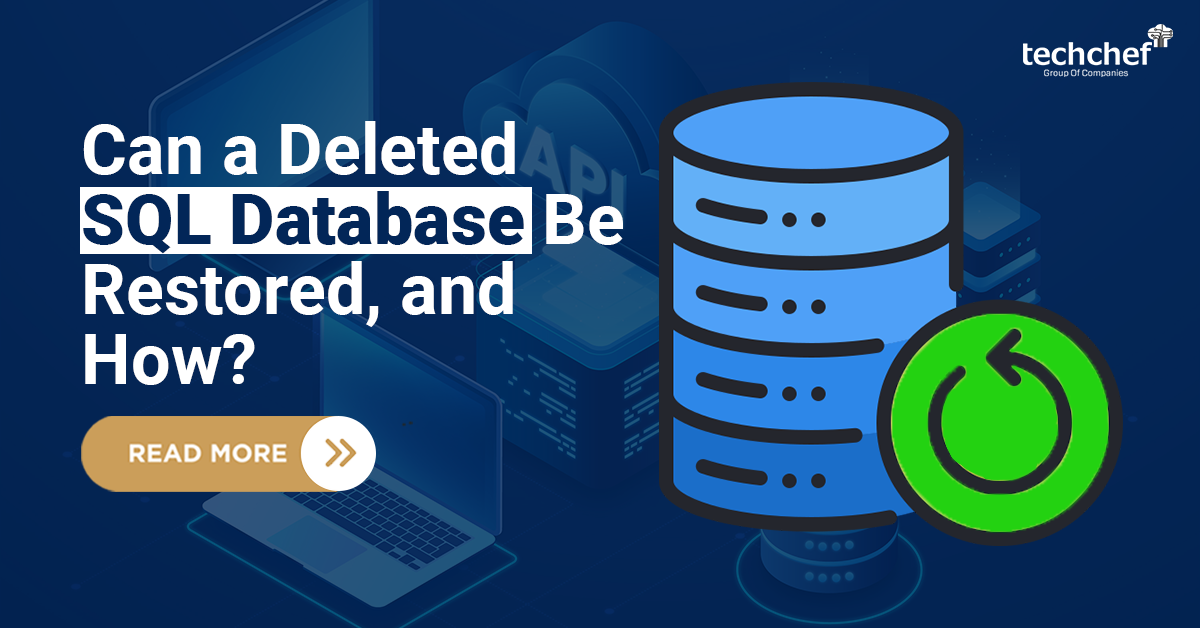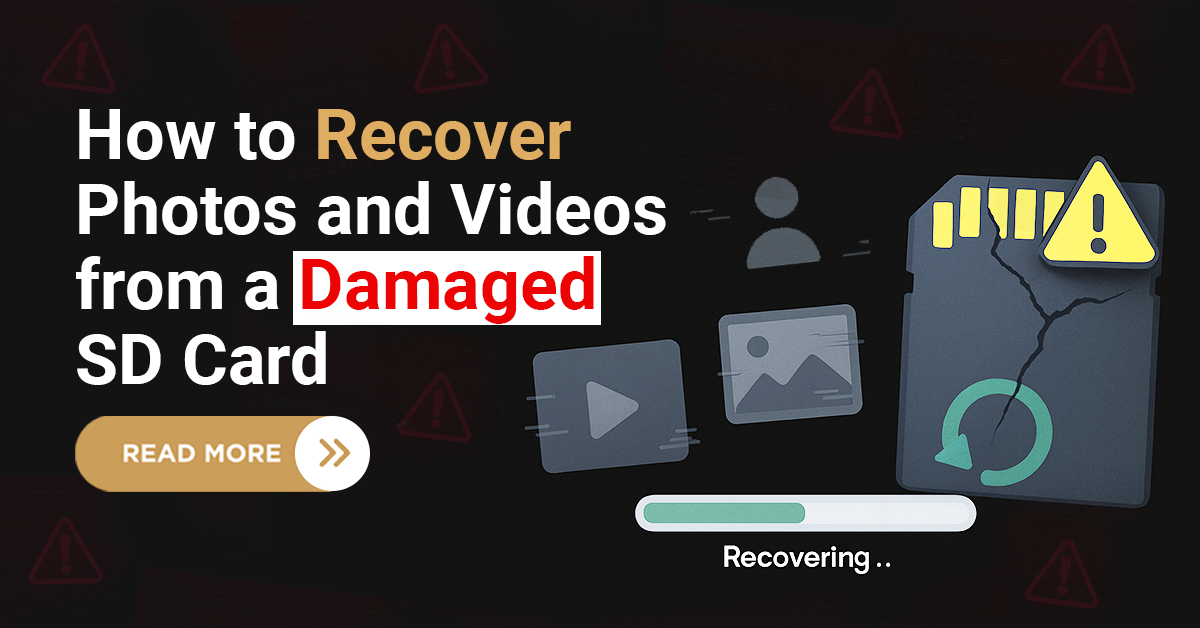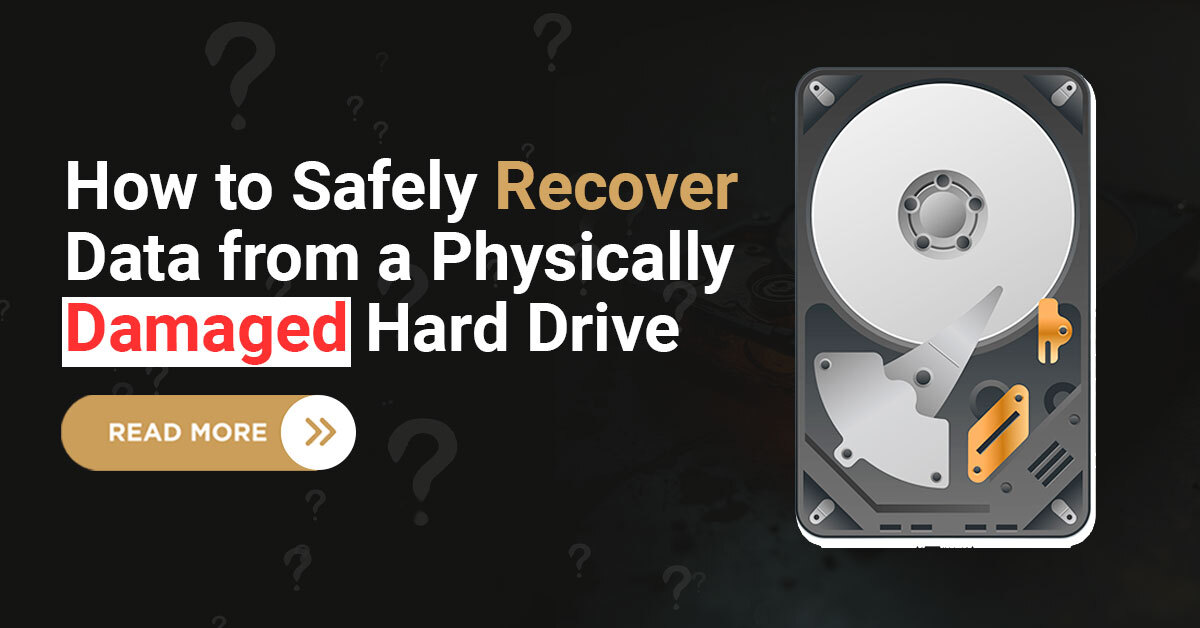Nevertheless, with this also comes the imminent issues of data loss. Sometimes your trusted digital storage solution may fail to upkeep your essential data. Due to certain issues like hard drive crash, accidental deletion, or drive corruption, your data may become inaccessible.
Thus, to help you get out of such situations data recovery services come to your rescue.
Have a look into the information below to know the importance of data recovery, along with common reasons responsible for data loss. Also, discover how data recovery works, and how to find professional service providers.
Importance of Data Recovery
Data recovery is the process of retrieving corrupted, accidentally deleted, lost, or inaccessible data from storage media. The process usually involves recovering data from internal and external storage devices including hard disk drives (HDD), USB drives, solid-state drives, CDs, DVDs, floppy disks, magnetic tapes, memory cards, and other data storage devices.
For almost every kind of business, data is an indispensable part. All business activities revolve around data. Therefore, ensuring the safety of information gathered over time is very important. Moreover, losing data whether on a personal or professional level can be traumatic. It is especially a cause of worry for business establishments because as per the statistics revealed around 72% of businesses that face critical data loss tend to shut down within 24 months. Hence, there is nothing more important than securing data.
However, in such instances, data recovery services provide a new lease of life. With the use of professional and advanced processes, salvaging data which otherwise appears irretrievable or lost can be easily retrieved. From all of the storage solutions even including modern configurations such as cloud storage, RAIDs, and NAS, data can be simultaneously recovered. In addition to this, data stored on devices supporting removable memory cards such as mobile phones or tablets can also be recovered using advanced techniques.
Since such accidents are unpredictable and can happen anytime, organizations need to be prepared to deal with them. Data recovery should be part of every organization’s disaster recovery plan. Doing so will aid organizations to deal with data loss emergencies and get back to the track within a minimal downtime.
Benefits of Data Recovery
Data recovery is beneficial in many ways. In corporate as well as personal life data recovery plays an imperative role.
Especially, for businesses data recovery services come as a boon. As inaccessibility to data by any means can set back your business and result in costly downtime. It may also result in losing your valuable clients. All business essential documents, files, projects, software, etc in case if lost can be easily retrieved back by using data recovery services. Apart from this, data recovery also saves businesses against monetary and reputation loss. It enables organizations to speedily recover from such scenarios and ensure they get back to their business as normal.
Furthermore, for personal requirements as well a lot of individuals are dependent on storage media. Your videos, photos, audios gathered over the time are saved on your computer or external storage devices. Once diagnosed with technical issues accessing your personal data through these devices becomes difficult. In such cases, data recovery assists you get back preserved digital memories.
Thus, whether it’s regarding personal or professional life data recovery endows you with appreciable benefits.
Reasons for Data Loss
Data loss can occur due to multiple reasons. It can also be caused by human error. However, depending on the type of cause data loss can be divided into two broad categories-
Physical Failure
Logical Failure
Physical Failure
Physical failure entails to a condition wherein the disk management system for windows or the Disk Utility system for macOS cannot detect the storage device. Component damage, connectivity complications, read/write failure, head crash, and bad areas in physical storage space all contribute to physical failure. In this kind of failure, the storage drive becomes inaccessible and requires the replacement of failed components using advanced tools & techniques.
Reasons for physical device failure:
Physical shock due to mishandling
Power failures.
Mechanical damage.
Fire, thunderstorms, earthquakes, floods.
Logical failure
Logical failure occurs when your files become inaccessible due to the loss of reference files on your storage device. In these kinds of failures, the device remains physically active. The various factors that contribute to logical data loss include partition corruption, partition deletion, OS failure, drive formatting, and virus damage. In logical failures, along with your drive, unallocated space in Disk Management (Windows) or greyed space in Disk Utility (Mac OS) also becomes unavailable. Since the device in such failures remains active the data remains intact, therefore its further use should be immediately stopped to prevent data overwriting. This will increase the chances of successful data recovery.
Reasons for logical device failure:
File Directory Damage from a Virus or Malicious Program
Operating System Corruption
Accidental File Deletion
Unintentional Formatting
Overwritten Data
How Data Recovery works
Data recovery helps you get back your lost data. But the chances of successful recovery majorly rely on the situation of data loss. However, it is quintessential to remember that it is nearly impossible to recover data once it gets overwritten. That’s why it is recommended not to write anything on storage until all files are rescued.
Data recovery is possible because during formatting or deletion data is not removed permanently. Only the references of files are removed which render data inaccessible. Thus, using technical procedures it is possible to recover all your lost files and folders.
Supported Devices for Data Recovery
Data can be salvaged from almost any kind of data storage device irrespective of its make and model. The supported devices for data recovery include:
Personal Computer (desktop, laptop, tablet, Mac)
Hard disk drive (standalone or hybrid)
Mobile Phones (iPhone, Android)
CCTV/DVR
Solid-state drive (NVME, PCIe)
Drone (internal memory)
USB flash drive
Memory card (SDHC, SDXC)
Optical drive (CD, DVD, Blu-ray Disk)
Digital camera (internal memory)
Enterprise Storage Solutions (RAID, NAS, Tape, Server)
SQL Database
Ransomware
Data can be recovered from the above devices using different techniques. Every kind of device has a distinct data recovery process depending upon its configuration.
Do and Don’ts once data loss
In order to preserve your data and avert the risk of permanent loss, there are some basic steps that you need to abide by. Mentioned below is a list of dos and don’ts that you must follow as soon as the data loss mishap strikes.
Have a look at these preventative measures:
Do’s
Immediately discontinue the device use as further use may result in a worsening situation.
If you suspect any signs of damage or data loss, calmly assess them and make a note of things that have happened. Doing so will help you diagnose issues later.
On encountering unusual changes in system/ drive consider taking up backup immediately.
Properly assess all power and data connections to drive.
If your drive makes erratic noises of clicking or grinding, switch off the system instantly.
Restrict using the affected device so as prevent permanent data loss.
If data loss has occurred from external drive then verify it’s functioning by connecting it to another working system.
Determine the nature of data loss; check whether it is a logical or physical failure.
The most important action you need to take is to call a data recovery expert company.
Don’ts
Don’t try to use non-responsive or clicking disk forcibly.
Don’t tap or hit hard drive with force as it may lead to a head crash.
Don’t attempt to open hard drive, it can ruin device beyond repair.
Don’t use any data recovery software or files, it may destroy data permanently.
Don’t access the internet on the damaged system, because browsers save the cache to your disk.
Don’t attempt to use any DIY methods; it can potentially cause more damage.
Don’t try to heat OR freeze the hard drive, it can cause further damage and make data irrecoverable.
Recovery of Data from Formatted Hard Disk
Formatting is done to remove all existing files and folders to provide a clean slate for new data. This is basically performed to clean up space in hard drive. But, unfortunately, sometimes you may become victim to accidental formatting which may prevent you from accessing your important files. This unintentional formatting issue can be alarming as it results in data loss.
However, during accidental formatting, your data is not overwritten immediately. The system only marks the space as clear for the next information to be written over it. Thus, the chances of successful data recovery strongly depend on the amount of data overwritten in the disk. Besides this, some other factors that may have an impact on data recovery process include:
Hard drive size.
Operating system.
Size of the requested files.
Utility involved in formatting
Despite all, it is still possible to recover data from an accidentally formatted drive. To prevent overwrite data recovery professionals create a clone of your hard drive. This is done to ensure that all recovery processes are performed on a cloned drive while keeping your original drive intact.
Recovery of Data from Broken Hard Disk
Mechanical failures are attributed hold a large share for data loss. Since hard disk drives have extremely small components they are more susceptive to physical damages. These damages may affect the platters, read/write heads, and PCB. However, when treating such issues use of advanced tools and techniques is critical.
Some of the most common signs of a broken hard drive include:
Unusual sounds of Clicking, Clunking, and Whirring
Failure to spin during the bootup process.
Onscreen error messages.
The smell of burning electronics or solder.
To recover data from broken hard drives, specialized facilities such as Class 10 ISO 4 Cleanroom are needed. The Cleanroom prevents sensitive drive components against contamination, especially the read/write heads and platters. Furthermore, necessary firmware repairs are required to diagnose damaged components and thereafter data is moved to other devices to carry out logical data retrieval processes if needed.
How to find the best Data Recovery Company?
Whether personal or professional every kind of data is critical. Therefore, when it comes to choosing a reliable data recovery company, you need to be extra cautious. You need to do diligent research before making any decision.
So, when choosing data Recovery Company make sure you check the following factors:
1. Data Recovery Process and Capabilities:
Dig in and conduct detailed research on the company professionals should be experienced and competent enough to handle complexities involved in the data recovery process.
Should have advanced tools and software needed in the process.
Staff should have the required technical skills.
Should have the class 100 cleanroom infrastructure.
2. Privacy of Data:
Inquire company about how your corrupted data will be handled and stored.
Check the company’s standard privacy measures.
The company should abide by international data privacy guidelines.
3. Price of Data Recovery:
Pricing for data recovery depends on multiple aspects. There may be different charges for drive analysis, charges per GB of data, charges based on the type of storage media such as Hard Disk, Portable, NAS/SAN Disks SSD, RAID Server, etc. So, gain a clear understanding of the pricing model the company follows.
4. Data recovery Turn around Time:
Before selecting a data recovery service provider, make sure to check their standard service delivery time frame. If the vendor takes too long your business continuity may be affected leading to your business loss.
So, make a wise decision, analyze your needs, and accordingly decide the data recovery service provider company you should choose.
Conclusion
Data recovery has gained prominence as an essential service. Data loss accidents can unexpectedly hit you at any time, anywhere. So, make sure you have an effective data protection plan in place to handle such tragedies.
Nevertheless, it is always wise to seek professional help in such situations. Techchef data recovery specialists can help you recover your lost data from all kinds of data loss situations. Techchef employs advanced recovery techniques to retrieve data from the hard drive of any brand or model. The company has its in-house R&D team and proprietary software to deal with the complication of data recovery processes.











